Trends, flowers and colours may divide tastes in the gardening community but very few plants have the universal admiration and enduring popularity of the much-loved clematis. The genus Clematis has been planted and cultivated in English gardens since the 16th century and belongs to the Ranunculaceae or the buttercup family, alongside border stalwarts such as delphiniums, anemones and thalictrums.
Every family has its divas and if we put the large-flowered attention-seekers to one side for a moment, I would like to explore the easier-to-grow, generously flowering and endlessly rewarding herbaceous clematis.
What are herbaceous clematis?
Clematis are mostly climbing plants, but some species lack the tendrils to cling as they climb, so need some kind of support. They will happily scramble through either a birch or a hazel-clad dome, or through a neighbouring shrub. They grow up from the ground each spring and die back in autumn, make ideal companions for other perennials, evergreen or flowering shrubs and roses in a mixed summer border.
These gorgeous, herbaceous clematis offer us an easy win – simple to look after and care for, extending the season of our shrubs and borders, and flowering late on into the mist-filled autumn. All they ask of us is a few pea sticks or a shrub through which to scramble.
The shrub Physocarpus opulifolius ‘Diabolo’, for example, is a useful, rich-purple foil for other plants, but now let’s imagine it with the violet-blue flowers of Clematis ‘Arabella’, popping all over its foliage, and suddenly it has been elevated to another level of interest entirely.
IN BRIEF
What Herbaceous clematis, including non-twining, climbing species and hybrids bred from species such as C. integrifolia, C. x diversifolia, C. viticella, C. heracleifolia, C. recta and C. viorna. Sometimes known as solitary or entire-leaved clematis.
Origins Originating from Europe and Asia.
Season Long-lived plants with an extensive flowering period from midsummer to early autumn.
Size From 60cm-2.5m in height with a 50cm-1m spread, depending on the species.
Conditions Tolerant of most fertile garden soils that do not become waterlogged or dry out. Best grown in full sun or light shade with a cool root run. Will grow on a range of pH, but particularly suited to neutral or alkaline soils.
Pruning group Pruning group 3 (remove previous year’s growth to a pair of strong buds in late winter).
Hardiness Hardy throughout all of UK and northern Europe with an hardiness rating of RHS H4 to H6. Depending on species they are suitable for gardens in USDA zones 3a-9b.
How to grow herbaceous clematis
How to plant herbaceous clematis
The advice of keeping the tops sunny and the base cool may be crude, but it is very apt for growing the majority of clematis. If fertile, moist and free- draining soil frustratingly eludes you, why not try growing clematis in a container? A good-sized, deep pot is ideal, filled with a mixture of peat-free compost and John Innes No.2, say 50:50, with a few handfuls of grit. Just add a 5cm layer of grit on the top and a fortnightly potash feed during the growing season and you’ll have a winning formula.
Pruning herbaceous clematis
Clematis pruning can baffle and may deter some from growing these plants but the unadulterated joy that characterises this selection of clematis is that their treatment could not be simpler: as they flower on their current year’s growth, they need to be cut down to just above the ground each spring as their buds begin to swell.
Read our expert guide to pruning clematis.
Propagating herbaceous clematis
If you are looking for an exact replica of your plant, division, cuttings or layering techniques are at your disposal, but a number of these species are easy to grow from seed. Clematis seed does not keep for long so it’s best sown when ripe and comes away from the plant with ease.
Sow thinly on top of a pot full of compost (2-3cm off the rim) and cover lightly with more compost before topping with a layer of grit to hold the moisture in and protect the seed. Place in a cool spot and do not allow the seeds to dry out. Do not be too quick to throw the pot away if germination isn’t swift, as they can be erratic. And remember that patience is a virtue.
Herbaceous clematis problems
Clematis wilt strikes fear into the hearts of most gardeners, but rest assured that the herbaceous group, with their refined and sophisticated flowers, are rarely affected.
Aphids can be problematic when growth begins in spring, but if you’re on the ball these can easily be dealt with through physical removal or a garlic- or soap-based spray.
Rabbits find young clematis shoots very appetising, so if they are a problem for you, protect the young shoots with some chicken wire and remove when the growth matures and the allure subsides as the stems harden.
Slugs and snails can also be tempted by the young leaves, and damage by these hungry pests will delay flowering and weaken the plant. A very knowledgeable chap once told me to control slugs and snails in February to prevent subsequent populations booming. Half an eaten grapefruit, turned upside down, or a beer trap from late winter onwards should keep them at bay without the need for pellets.
The best herbaceous clematis for your garden
Clematis ‘Alionushka’
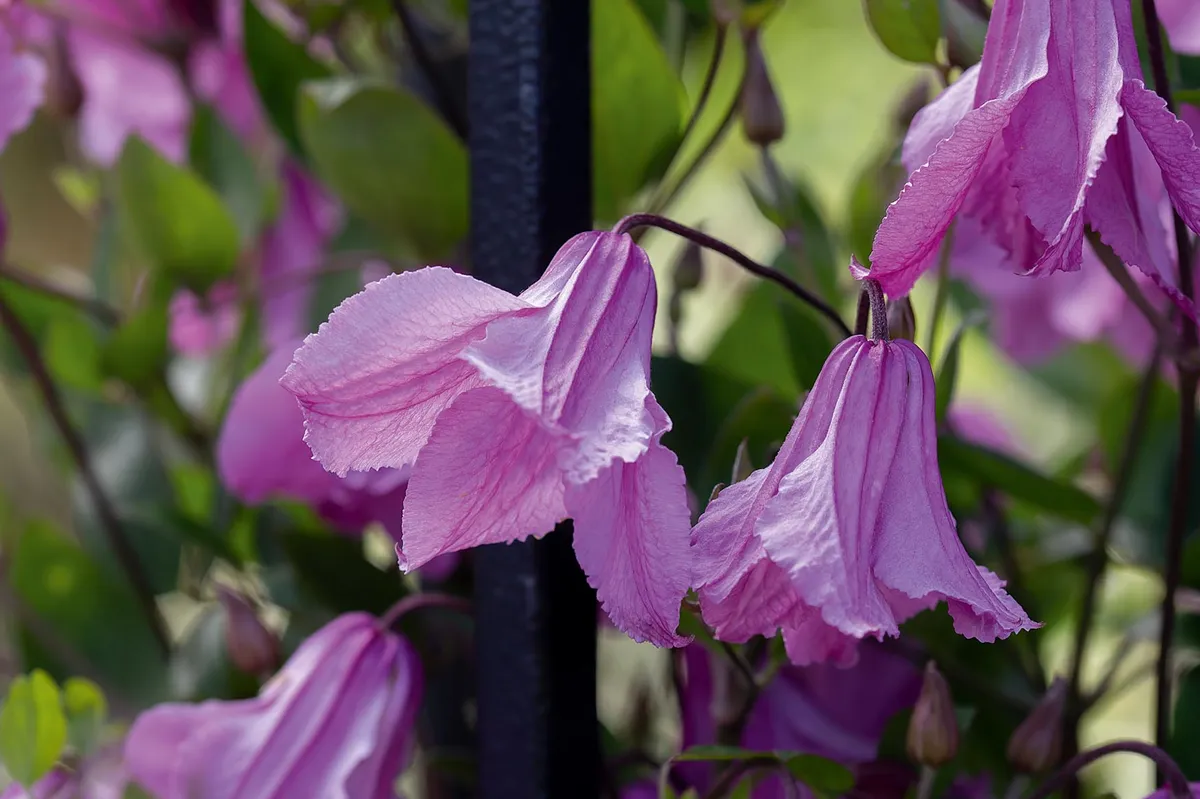
A free-flowering herbaceous clematis with deep-mauve to pink, bell-shaped flowers from early summer right through to the autumn. An excellent form for growing up a trellis or wall, but remember to help the plant out by tying it in as it grows.
1.5m. AGM*. RHS H6.
Clematis heracleifolia var. tubulosa Alan Bloom (= ‘Alblo’)

A cultivar bred from this Manchurian and Korean variety of Clematis heracleifolia, which gives masses of hyacinth-like flowers with recurved sepals. The scented, dark-blue flowers appear from July. Loved by bees.
1.5m. RHS H6.
Clematis songorica

Pure-white flowers with cream-coloured panicles have a hawthorn or meadowsweet scent to them and are held on bamboo-like, grooved stems. Flowers are followed by fabulous seedheads in the autumn.
1.5m. RHS H6, USDA 6a-8b.
Clematis heracleifolia ‘Pink Dwarf’
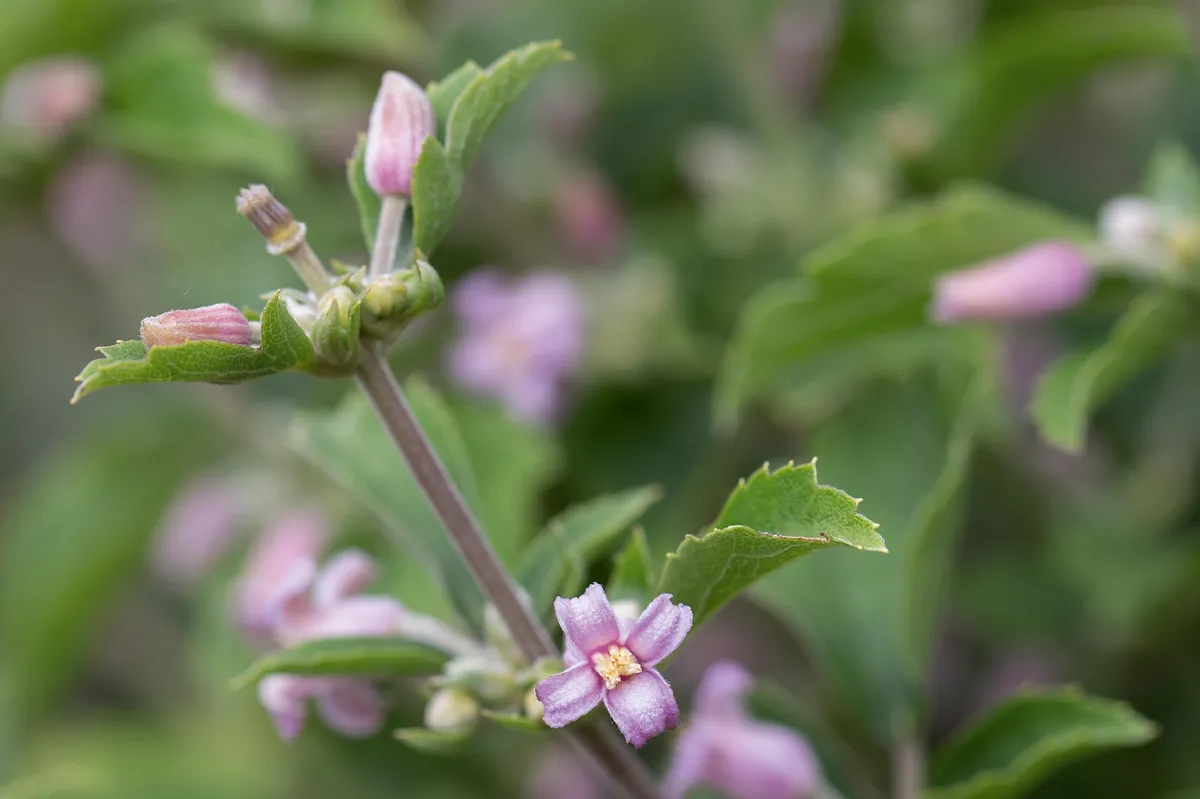
Small, bell-shaped, pink flowers bloom from July with a sweet scent. This low, shrubby clematis works well in semi-shade and is suitable for the front of a border. Flowers can also be cut and enjoyed in your home.
70cm. RHS H6.
Clematis x durandii
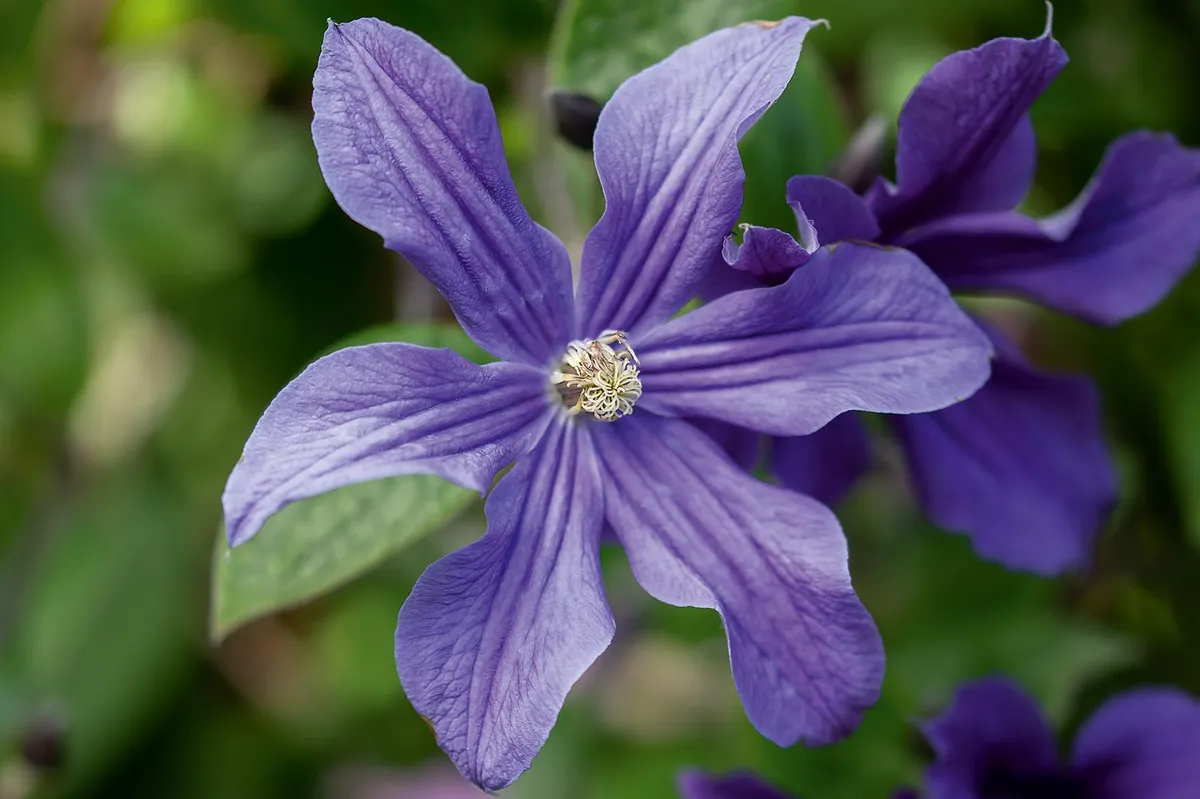
A much-loved hybrid between C. ‘Jackmanii’ and C. integrifolia with rich, saucer-shaped, indigo-blue flowers with deep midribs. The semi-nodding flowers, with beautifully contrasting pale-yellow anthers, appear from June until the autumn.
1.5m. AGM. RHS H6, USDA 5a-9b.
Clematis x aromatica
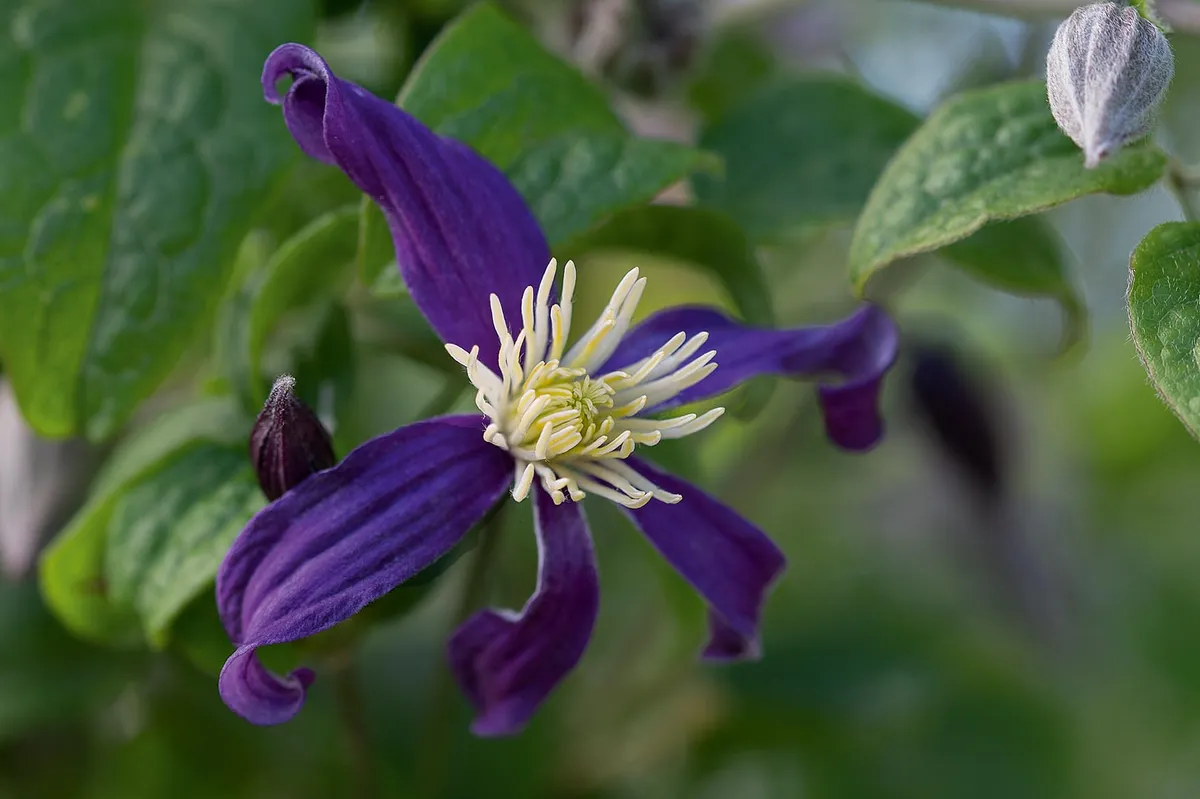
A hybrid between C. flammula and C. integrifolia. Panicles of small, violet-blue flowers with white stamens, the petal edges rolling under as the flower matures. An excellent choice for those who are looking for scent. Flowers from July to September.
2m. RHS H6.
Clematis Princess Kate (= ‘Zoprika’)
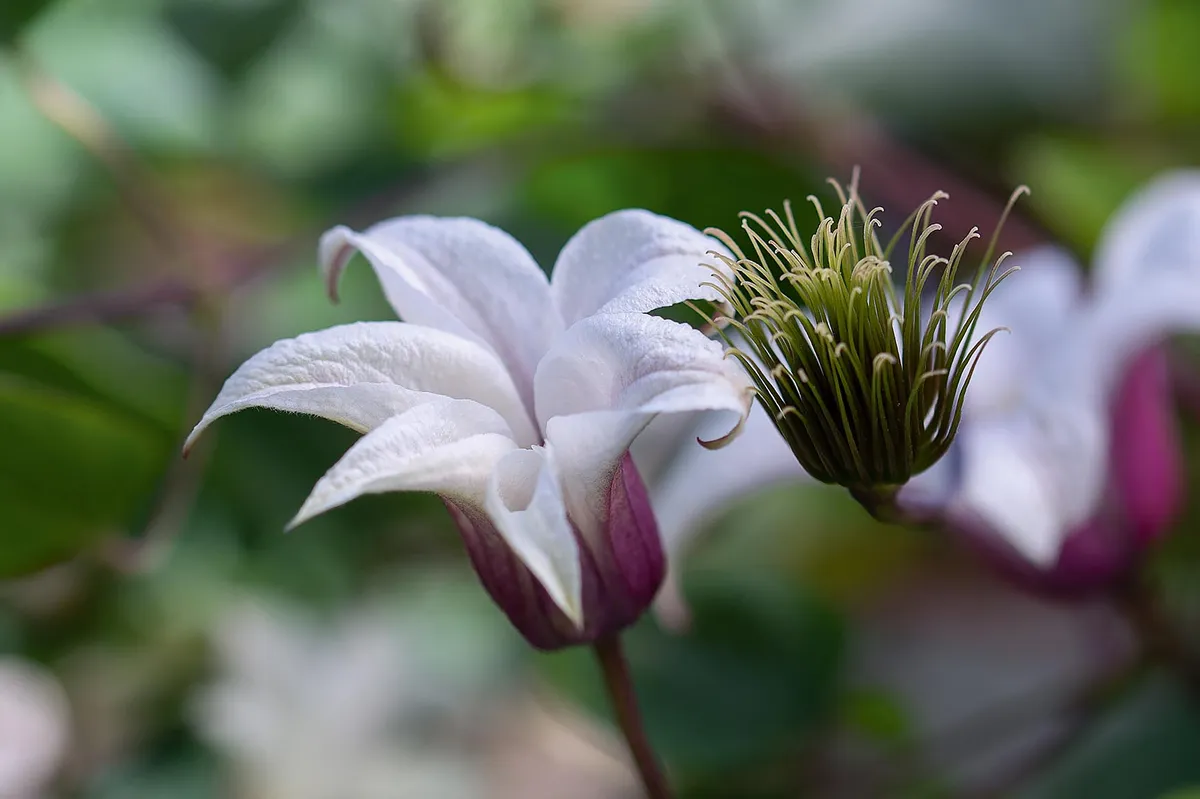
Ideal for cutting. The white sepals with contrasting, outer, purple hues and a dark-purple centre, are fit for a queen and are borne from June to September. Reflexed sepals of these trumpet, almost tulip-like, flowers grow on dark-purple stems.
3m. RHS H5.
Clematis ‘Sizaia Ptitsa’
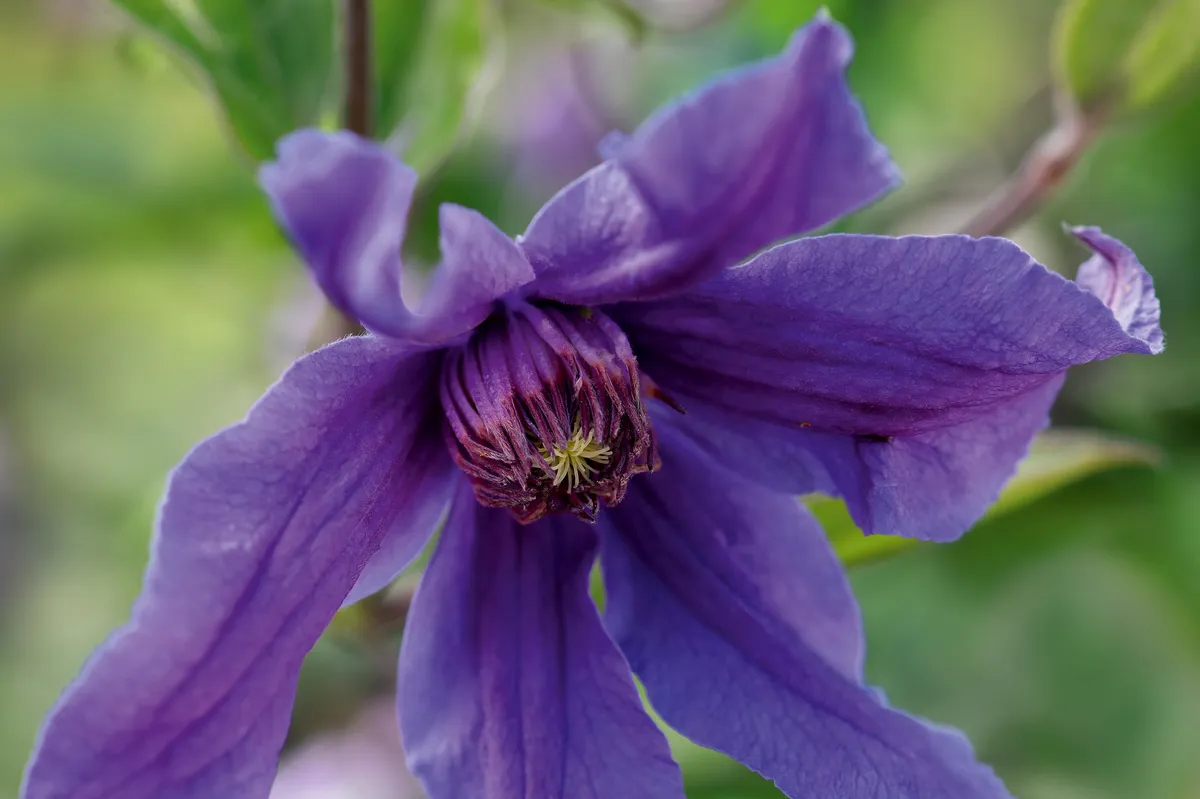
An offspring of C. x durandii, with one of the largest flowers in the herbaceous group. The violet-blue sepals, which have a deep-violet stripe along the centre and are paler towards the edge, are narrow and twisted, giving it a spider-like appearance. Flowers from June to September.
1.5m. RHS H6†.
Clematis ‘Everett’
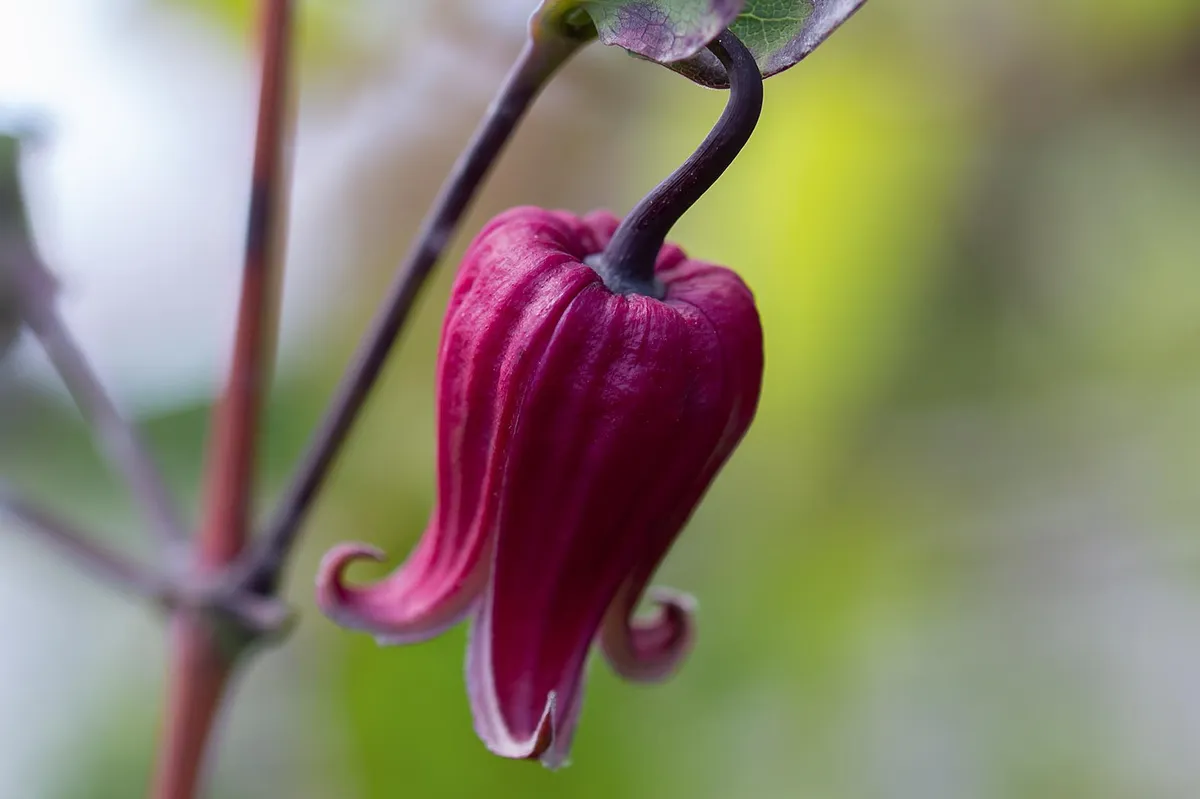
Named after Everett Leeds, a former chairman of the British Clematis Society, this clematis has C. viorna parentage. The reddish-purple, urn-shaped flowers become paler towards the tip of the recurved petals and are much paler on the inside.
1.5m. RHS H4.
Clematis Sweetheart (= ‘Witswe’)

Like most C. integrifolia cultivars, 'Sweetheart' will perform from early summer with pink/mauve flowers and a deeper-pink, central bar. Slightly twisted sepal margins add to the appeal. The blooms last well in water so can be cut too.
2m. RHS H6.
Clematis ‘Étoile Rose’

A delightful, semi-nodding clematis. The flowers range in colour from deep pink to pale mauve, and have silvery-pink margins that curve slightly, with the centres a darker shade of pink. A more vigorous type that can be used to enhance a large shrub or to cover a sizeable wall or fence.
2.5m. RHS H4.
Clematis Mississippi River (= ‘Zomisri’)
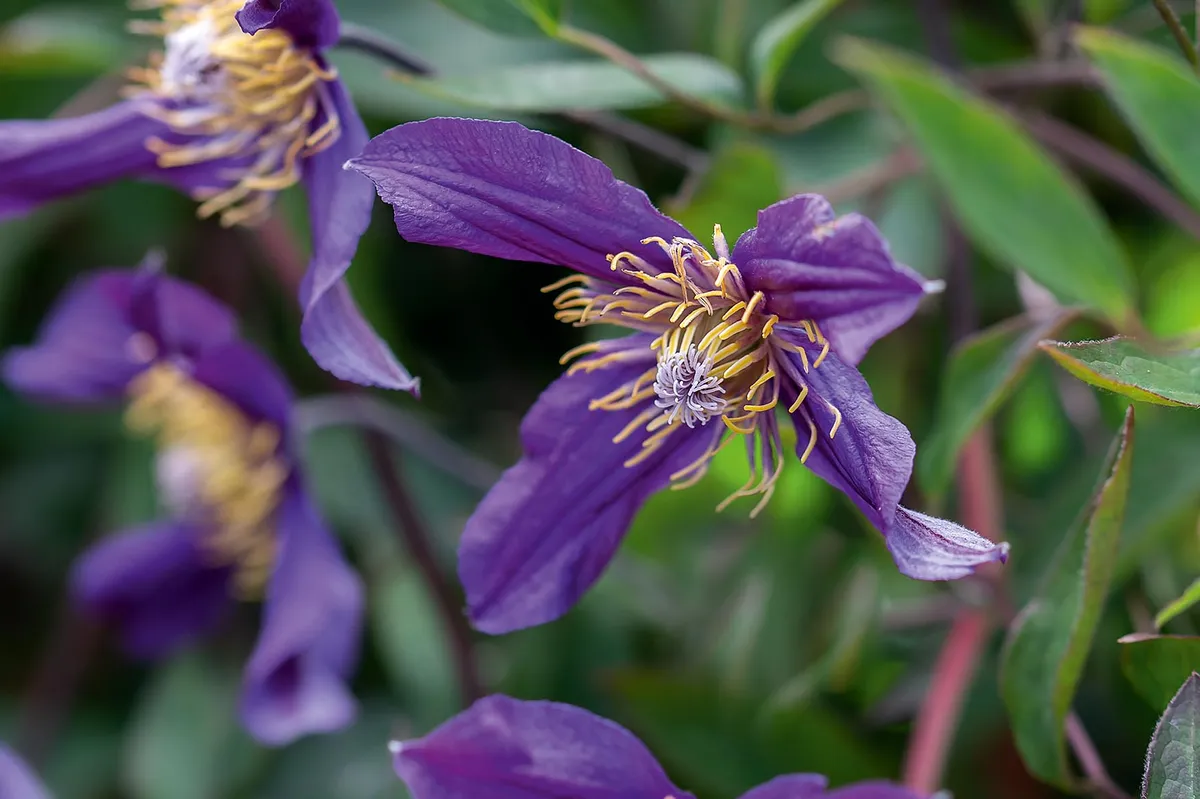
With C. integrifolia running strongly through its genetics, rich, dark-violet flowers appear over a long period from early summer through to autumn. This excellent new hybrid originates from Wim Snoeijer of J van Zoest. 2m. RHS H6.
Clematis ‘Sweet Scentsation’
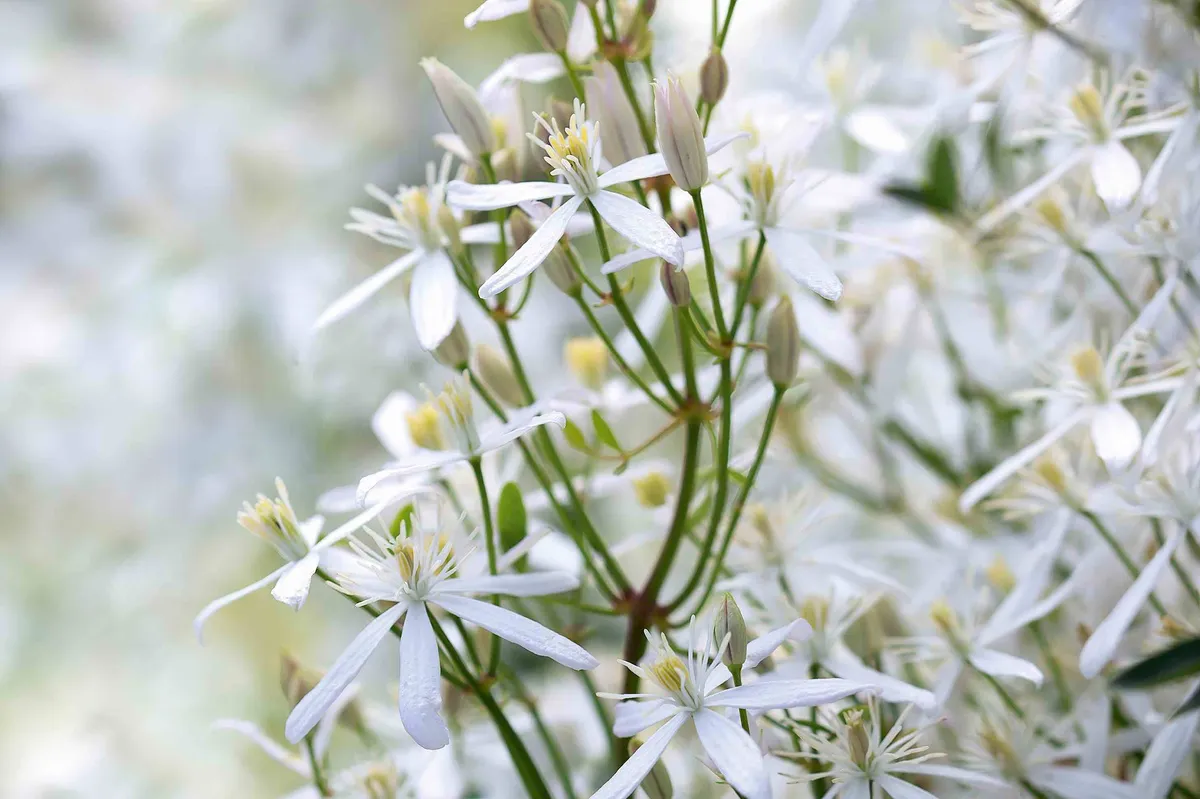
Masses of small, star-shaped, scented, white flowers during July and August. Can be used to great effect if planted with another vigorous cultivar from the herbaceous group. Its showy sepals offer both scent and colour.
2.5m. RHS H5, USDA 7a-8b.
Clematis ‘Arabella’

Rightly one of the most popular herbaceous clematis. Deep-blue to mauve flowers with a hint of pink in abundance from early summer until the autumn. Suitable for a deep pot for those without much space or who lack a suitable spot in the garden.
1.8m. AGM. RHS H6.
Where to buy and see herbaceous clematis
Kevock Garden Plants
Kevock Road, Lasswade, Midlothian EH18 1HX. Tel 0131 454 0660, kevockgarden.co.uk
Hawthornes Nursery (National Collection Holder)
Marsh Road, Hesketh Bank, nr Preston, Lancashire PR4 6XT.
Tel 01772 812379, hawthornes-nursery.co.uk
Peter Beales Roses
London Road, Attleborough, Norwich, Norfolk NR17 1AY.
Tel 01953 454707, classicroses.co.uk
Thorncroft Clematis
Merryfield, North Green, Reymerston, Norwich, Norfolk NR9 4RD.
Tel 01953 850407, thorncroftclematis.co.uk Mailorder only
Walled Garden Nursery
Brinkworth House, Brinkworth,
nr Malmesbury, Wiltshire SN15 5DF.
Tel 07921 436863, clematis-nursery.co.uk